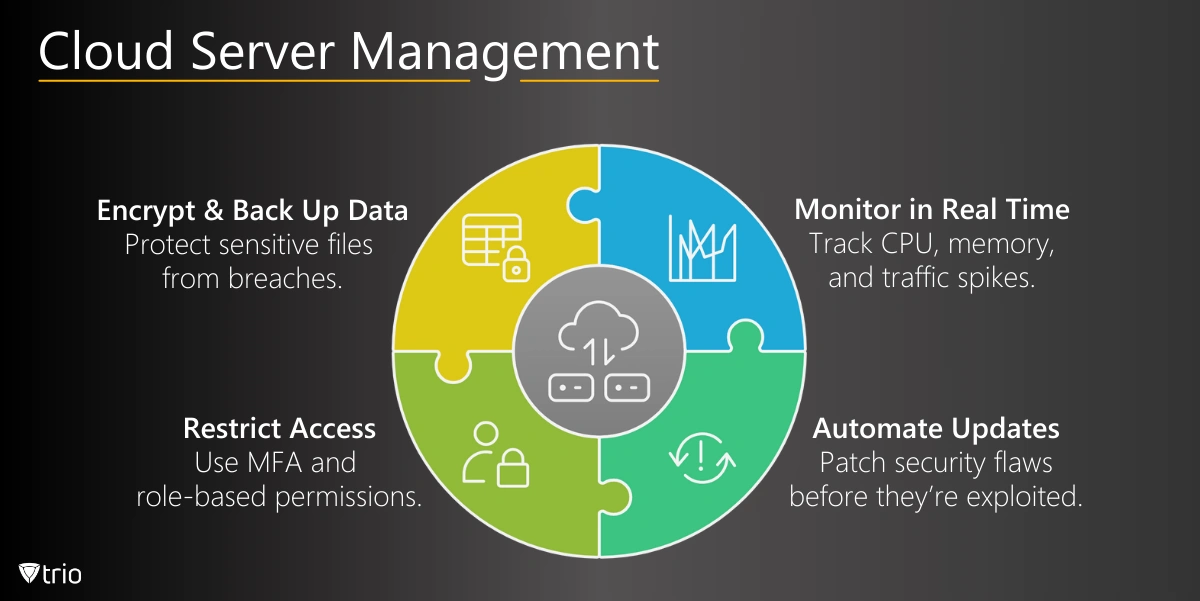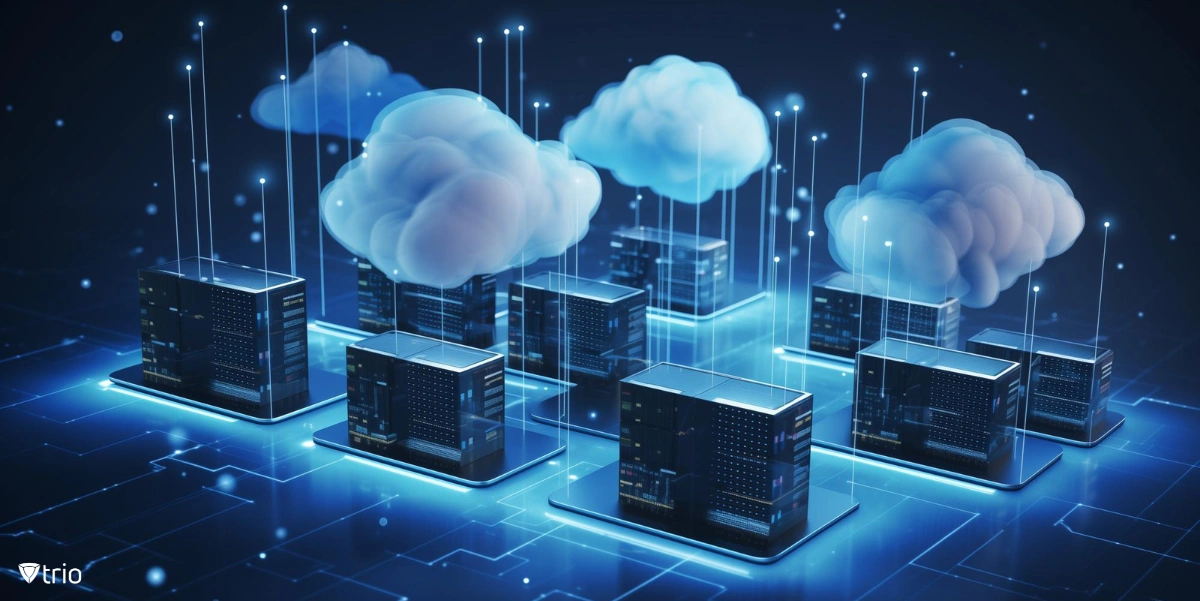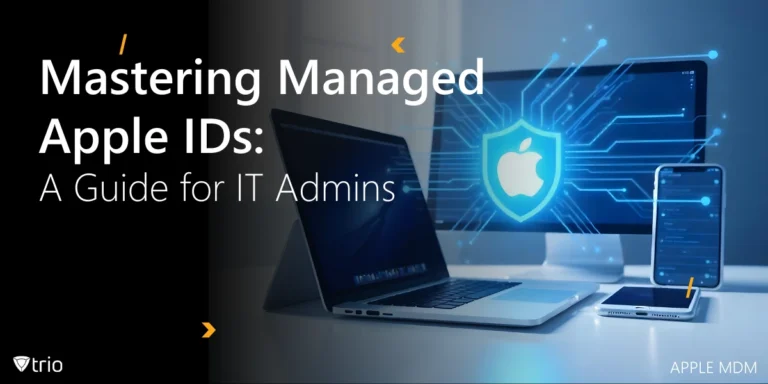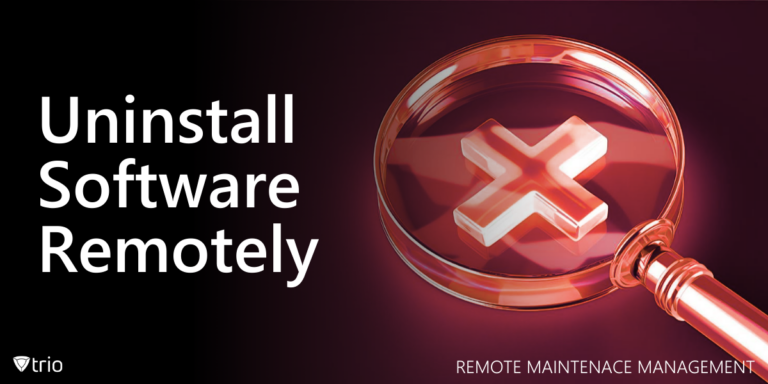In today’s digital era, cloud server management plays a crucial role in optimizing and securing online systems. It helps keep servers running smoothly in the cloud, helping businesses deal with the tricky parts of going digital. This blog delves into its significance, highlighting the integration between cloud management and Mobile Device Management (MDM) in enhancing operational efficiency and security.
What is Cloud Server Management?
Cloud server management contains the processes, tools, and practices for managing and controlling cloud computing environments. At its core, it involves ensuring that cloud servers, which are virtual servers accessible over the internet, operate optimally within a cloud infrastructure. This management covers a broad range of tasks, including the deployment, configuration, monitoring, and optimization of servers, as well as ensuring their security and compliance with industry standards. The goal is to maintain a cloud environment that is both efficient and resilient, capable of adapting to changing loads and demands.
The importance of cloud server management in maintaining efficiency, security, and scalability in cloud environments is inevitable. Efficient management helps organizations maximize their cloud investment by optimizing resource utilization, reducing waste, cutting costs, and improving performance. From a security perspective, effective cloud server management includes implementing robust security measures such as encryption, access controls, and regular security assessments to protect data and applications from threats. Scalability, another critical aspect, ensures that cloud environments can easily expand, or contract based on the organization’s needs. This flexibility is vital for businesses looking to grow or those that experience inconsistent demands, enabling them to seamlessly scale their IT resources.

Understanding the Cloud Services Landscape
Navigating the cloud services landscape is crucial for effective cloud server management. The four main cloud service models—Infrastructure as a Service (IaaS), Platform as a Service (PaaS), Software as a Service (SaaS), and Function as a Service (FaaS)—each cater to different needs and aspects of managing cloud environments.
- IaaS provides a virtualized computing infrastructure managed over the internet. It’s a foundational layer that offers flexibility in deploying and managing virtual machines, storage, and networks. IaaS benefits cloud server management by allowing administrators to easily scale resources up or down based on demand, ensuring optimal performance and cost-efficiency.
- PaaS offers a framework for developers to build, test, deploy, and manage applications without worrying about the underlying infrastructure. It streamlines the development process, making it faster and more cost-effective. For cloud server management, PaaS reduces the need for extensive infrastructure management, enabling a focus on innovation and application performance.
- SaaS delivers software applications over the internet, eliminating the need for installations and maintenance on individual devices. It simplifies software management, providing access to the latest features and updates without manual intervention. SaaS benefits cloud server management by offloading software maintenance and patching, enhancing security, and improving user accessibility.
- FaaS, the most recent evolution, allows developers to execute code in response to events without maintaining a server. It’s ideal for microservices architecture, where applications are built as a collection of small, independent services. FaaS simplifies cloud server management by automatically managing the computing resources required to run the code, making it a cost-effective solution for scalable applications.
Each cloud service model offers distinct advantages for cloud server management, from infrastructure flexibility with IaaS to simplified application development with PaaS, hassle-free software updates with SaaS, and efficient resource use with FaaS. Understanding these models and their benefits is key to optimizing cloud server management systems and ensuring efficient, secure, and scalable cloud environments.

Cloud Management Platforms vs. Cloud Server Management Tools
In the realm of cloud computing, it’s crucial to distinguish between cloud management platform (CMP) and cloud server management tools. While both serve essential roles in maintaining and optimizing cloud environments, their functionalities cater to different aspects of cloud management. CMPs offer a comprehensive suite of services designed to manage the entire cloud infrastructure lifecycle. They provide an integrated environment for managing public, private, and hybrid clouds, enabling businesses to deploy, manage, and optimize cloud resources across multiple service providers from a single interface. On the other hand, cloud server management tools focus more narrowly on specific tasks within the cloud infrastructure. These tools might specialize in monitoring, security, performance optimization, or automation of cloud server instances. They are typically used with CMPs to enhance specific areas of cloud management.
Together, CMPs and cloud server management tools form a symbiotic relationship, each complementing the other’s capabilities. CMPs lay the groundwork for broad cloud infrastructure management, offering a bird’s-eye view and control over resources, while management tools drill down into specific areas, offering depth and expertise. This combination allows businesses to not only efficiently manage their cloud environments but also ensure they are optimized, secure, and responsive to their changing needs. By leveraging both platforms and tools, organizations can achieve a balanced and comprehensive approach to cloud management, harnessing the full potential of their cloud investments.
Exploring Cloud Server Management Solutions
Exploring cloud server management solutions is crucial for businesses looking to optimize their cloud infrastructure efficiently and effectively. These solutions vary widely, catering to the diverse needs of modern enterprises, from small startups to large corporations. They provide a range of functionalities, including automation of routine tasks, real-time monitoring of cloud resources, ensuring security compliance, and facilitating seamless integration with existing systems. By deploying the right management solution, businesses can significantly reduce operational costs, enhance system reliability, and accelerate deployment cycles, thereby improving overall productivity and business agility.
Among all the solutions available, the concept of teamwork cloud stands out as a crucial tool in enhancing collaboration and efficiency within cloud management. This approach leverages shared workspaces, unified communication tools, and integrated project management features, enabling IT teams to collaborate more effectively in real-time. The teamwork cloud environment offers a culture of transparency and cooperation, ensuring that all team members are aligned with the organization’s cloud management goals. It simplifies the process of managing cloud servers by allowing team members to quickly address issues, share insights, and deploy updates, thereby ensuring that the cloud system remains robust, secure, and responsive to the changing needs of the business.

Integrating Mobile Device Management with Cloud Server Management
Integrating Mobile Device Management (MDM) with cloud server management is becoming increasingly crucial as businesses move more of their operations and data storage to the cloud. The relevance of MDM in cloud environments lies in its ability to maintain security and compliance across all devices accessing cloud resources. By managing and monitoring mobile devices, MDM ensures that only authorized devices can access sensitive cloud data, significantly reducing the risk of data breaches.
MDM solutions complement cloud server management by providing a layer of security that is both comprehensive and nuanced. For instance, MDM can enforce encryption, strong passwords, and other security policies on devices, ensuring that the endpoint security standards match the cloud’s security requirements. Furthermore, MDM allows for the remote wiping of data on lost or stolen devices, safeguarding information even when the hardware is no longer in control. This seamless integration offers the following benefits:
- Security and Compliance: Enforce end-to-end security protocols from mobile devices to cloud servers. Moreover, employing network segmentation as part of our cloud server management strategy significantly enhances security. By dividing the network into distinct segments, we can control access more effectively and limit potential breaches to a smaller section of the network.
- Device Oversight: Gain visibility into device status, location, and usage for better control over how cloud resources are accessed. Furthermore, implementing conditional access policies is crucial within the security framework of cloud server management. These policies allow businesses to define and enforce precise access controls, ensuring that only authenticated and authorized devices, users, and locations can access cloud resources.
- Automated Management: Automate the deployment of cloud applications and management policies to devices, ensuring consistency and efficiency.
Through these mechanisms, integrating MDM with cloud server management not only enhances security but also streamlines administrative tasks, making it easier for IT departments to maintain oversight and ensure the smooth operation of their digital environments. In addition to using MDM for securing mobile devices, leveraging Dynamic Host Configuration Protocol (DHCP) servers is crucial for maintaining a robust network in cloud environments. This ensures dynamic host configuration is managed effectively, supporting seamless access to cloud resources. Furthermore, when integrating MDM with cloud server management to enhance security and streamline operations, the role of privileged access management becomes increasingly critical. Ensuring that only authorized devices and users have privileged access to sensitive cloud resources underlines the necessity of a comprehensive approach.
Choosing the Right Cloud Server Management Products for Your Business
Choosing the right cloud server management products is essential for the efficient and secure operation of your business’s digital infrastructure. This process involves understanding your current needs, such as IT server management, which plays a pivotal role in ensuring smooth operation within your IT ecosystem. The selection process should be grounded in a clear understanding of your current needs and future growth plans. Here are some practical tips to guide you:
- Identify Your Needs: Begin by assessing your specific requirements. Consider factors like the size of your cloud environment, the complexity of your network, and the types of applications you’re running. For businesses emphasizing collaboration, teamwork cloud solutions that facilitate seamless communication and project management among team members can be particularly beneficial.
- Evaluate Features and Scalability: Look for cloud server management products that offer comprehensive features addressing key areas such as performance monitoring, security management, automation, and compliance tracking. The product should not only serve your current needs but also scale with your business. It’s essential to choose a solution that can adapt to evolving cloud technologies and growing workloads without requiring a complete overhaul of your management tools.
- Consider Integration Capabilities: Ensure the product seamlessly integrates with your existing cloud services, tools, and applications. Integration capabilities are vital for creating a cohesive cloud environment. A product that offers easy integration with popular cloud platforms and services reduces the complexity of managing multiple disparate systems. Additionally, consider how well the product integrates with MDM solutions. Effective MDM integration is key to managing and securing mobile access to your cloud resources, crucial for supporting remote work and BYOD (Bring Your Own Device) policies.
In addition to evaluating cloud server management products, it’s crucial to consider their integration with software management tools. These tools facilitate the deployment, update, and monitoring of software applications across your cloud servers, ensuring that all software assets are up-to-date, secure, and operating efficiently. Effective software management is integral to maintaining the health and performance of your cloud infrastructure, complementing your cloud server management strategy.
See Trio in Action: Get Your Free Trial Now!
Conclusion
In today’s fast-paced digital world, comprehensive cloud server management is crucial for any business aiming to stay ahead. It simplifies operations, boosts security, and ensures your systems can grow with your needs. Integrating MDM further strengthens this by securing and simplifying mobile access to cloud resources. As you navigate the complex landscape of cloud management, consider leveraging Trio. This leading MDM solution seamlessly integrates with your cloud management strategy, enhancing security and efficiency across the board. Discover how Trio can transform your cloud server management by trying out its free demo today.




